Lea Hahn is 22 years-old. She’s been working as a surf photographer and videographer in Tahiti since 2017.
Born and raised in French Polynesia, Hahn is the only professional female surf photographer on the island.
She started her career in 2017 as a camerawoman shooting a surf movie from land.
When she saw media professionals in the water, capturing the action, she immediately knew she wanted to be one of them.
The young Tahitian says, “it was a way for me to get near the big waves I would never dare to ride with my little level in the surf.”
Lea Hahn is fascinated by surf action. And the result speaks for itself.
She combines talent with determination, sense of positioning with knowledge of the waves.
Hahn is perfecting and honing her skills as a lenswoman in one of the most dangerous lineups on the planet – Teahupoo.
Here’s how she became a go-to surf photographer for brands, magazines, and filmmakers.
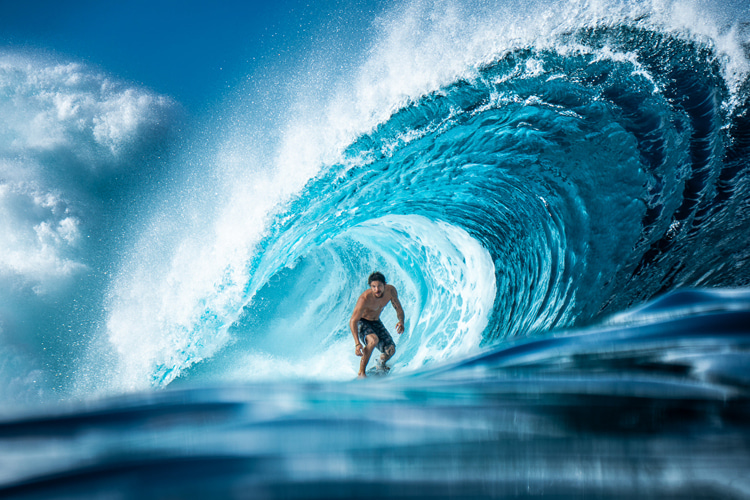

When did you shoot at Teahupoo for the first time?
I shot Teahupoo for the first time on a boat. It was the first swell I witnessed on my return from the film’s shooting in the islands.
At the time, I didn’t yet have a camera housing to get in the water and wasn’t experienced in big waves.
I learned to shoot with my boyfriend when we met. In the beginning, I used his housing a lot while he was surfing – it was a nice balance.
When I got enough money, I bought my own housing. It was the beginning of a beautiful adventure.
What are the challenges surf photographers face in a place like Teahupoo?
Teahupoo is one of the heaviest and most dangerous waves in the world.
The waves break over a sharp coral reef lying only a few meters below the surface. It is this unique combination of size, speed, and power that makes it so dangerous.
In surf photography, you need to understand the ocean, treat it with respect, never turn your back at it, understand the wave, and never underestimate the conditions.
The big danger is panic because panicking is a waste of energy and breath you could be using to get out of an uncomfortable place.
The challenge in surf photography is finding the right balance between the elements surrounding you to get the perfect shot or video.
During big swells, there are a lot of people out there. But I don’t get nervous about being surrounded by people.
It’s the boats – they put themselves in the aquatic photographers’ place, and they get closer to the wave to charge more to customers for more show.
They put us in danger by blocking us in the waves, and the current of their propellers also prevents us from swimming.
It’s a stressful situation, and I don’t have a helmet. I have to buy one quickly.
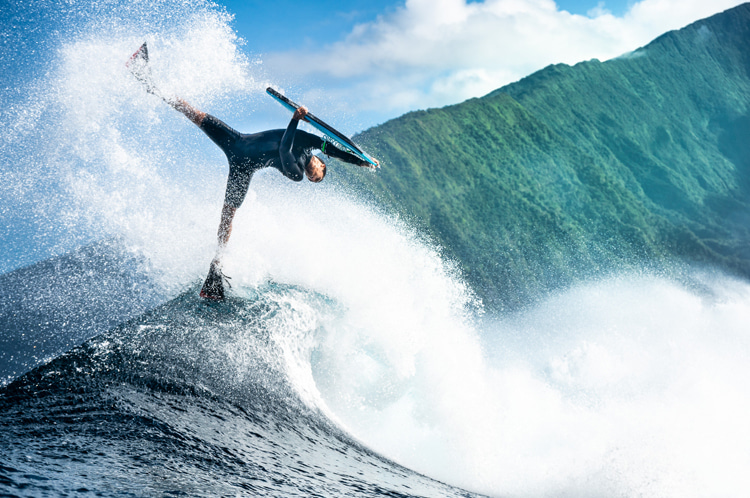

Are you the only female surf photographer in Tahiti or Teahupoo?
On an average day, I am often the only woman photographer.
The only time I shot with another female photographer was during a Teahupoo swell two years ago.
Maria Fernanda came from abroad to shoot the wave. It was really cool to share the lineup with another woman.
Don’t forget to check her Instagram profile (@mariafernandaphoto). You will not be disappointed because she is very talented.
But generally, there aren’t many women in the water or even surfing and bodyboarding. Sometimes I wonder why because we have as much potential as men, and we have incredible waves all year long.
How have you made sure everyone respected you in a male-dominated lineup and job?
I never had this problem here in Tahiti because we are a big family.
At first, when I started shooting, I think they were surprised and didn’t take it seriously because they do not often see women.
But later, when I returned, swell after swell, they could see that I really wanted to improve and succeed in what I love doing.
They have always respected me, and they were less concerned about my safety when they saw that I knew what I was doing.
I have always been honored and grateful to take pictures in the water alongside great photographers like Ben Thouard, Domenic Mosqueira, and of course, my boyfriend, Manea Fabisch.
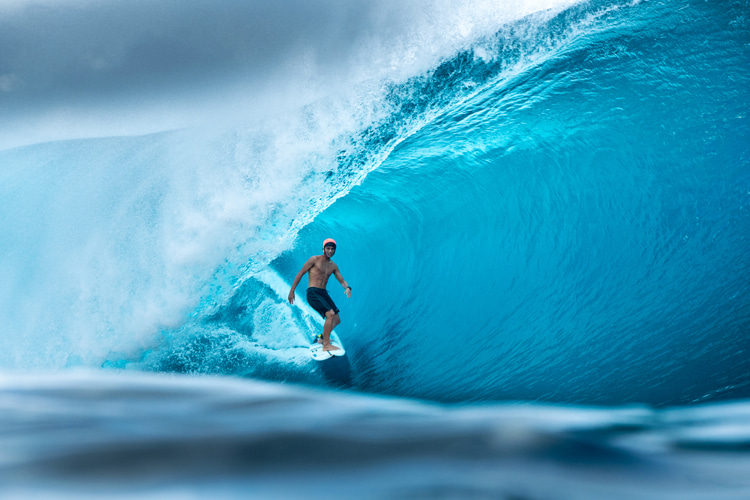

Do you make a living from professional photography and videography?
Yes, I do. The advantage is that Tahiti is a small island; there are not many aquatic photographers, as opposed to Hawaii.
Why do you think there are not many women in surf photography? Any advice for other women wishing to pursue a career in surf photography?
Just go, go, go. Everyone can do it with motivation and training.
It’s really important to go step-by-step and learn from others, and it’s not because you’re a woman that you won’t do it well.
I know there is a pressure to conform to traditionally “feminine” stereotypes, which leads to many girls abandoning the sport completely.
I think sports, in general, can be one of the great drivers of gender equality.
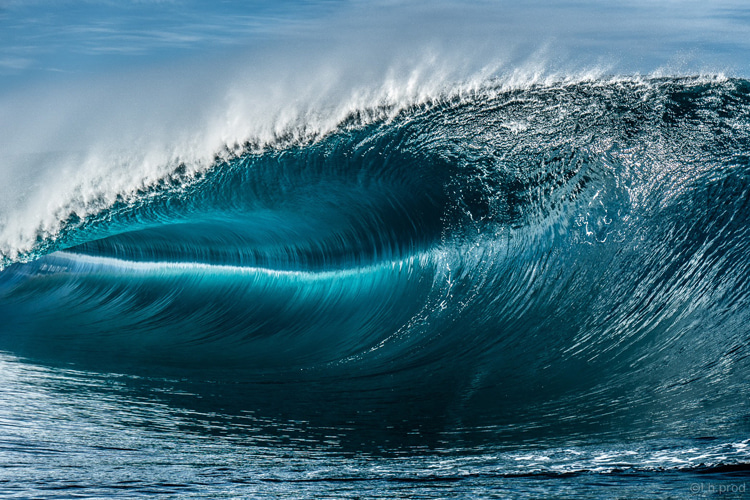

What type of equipment do you use?
I have a Sony camera equipped with an AquaTech housing, my wetsuit, and my fins.
Have you ever felt that being a woman was an issue when it comes to selling your work?
Not really. Whether you’re a man or a woman, people look for quality in your work. It is getting known that takes time.
What are your goals regarding surf photography? Is there a dream job you wish you’d have?
I learn every day. I want to continue to improve myself.
I want to continue being inspired by Nature, work on all my photography and videography projects, and maybe inspire more women to get into water photography.
In Tahiti, I know a few who want to start – it sounds great.
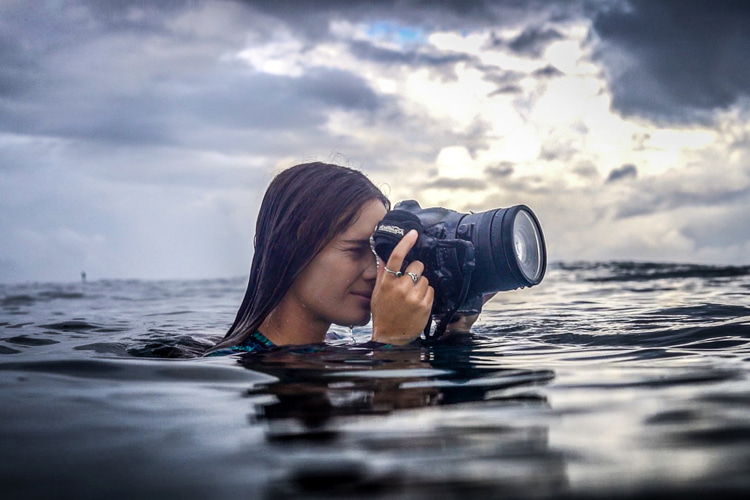

Technically speaking, what is the hardest thing in surf photography?
The hardest part, but the most fun at the same time, is to find the best angle to bring out the magic of the action and understand the ocean.
Naturally, you need to keep yourself fit, be a good swimmer, and have an excellent condition to practice this “sport.”
The best part is to feel refreshed after a session.
When you have many things in your mind, you go in the water for three or four hours and feel completely calm and soothed.
What are you most proud of in your career so far?
I’m proud to have reached the level where I am right now in three years only because, typically, it’s a longer path.
My lovely boyfriend helped me a lot. He was the one who gave me a lot of advice, and it’s thanks to him that I progressed so quickly.
I’m proud to have had no serious accidents in three years because it’s a high-risk job. Let’s pray I can keep it that way.
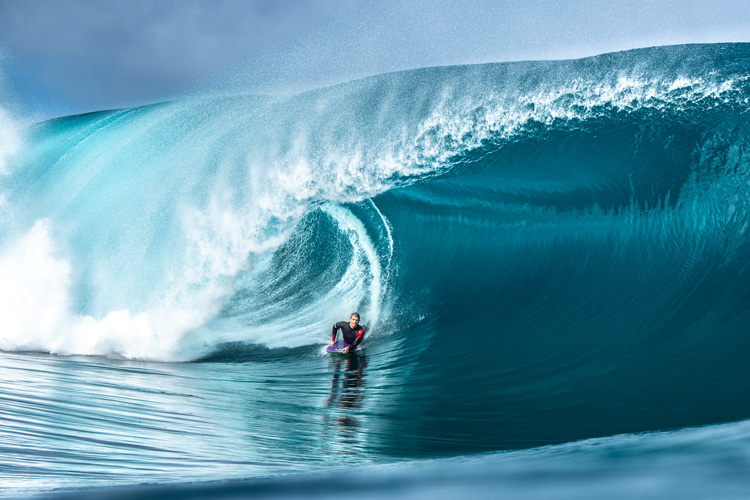

What message would you like to leave for everyone at this moment in time?
Here in Polynesia, we can see the effects of climate change with global warming and coral bleaching dangerously increasing.
Plastic pollution is a serious issue, too. Marine animals are getting trapped in our waste, and it’s a major cause of significant mortality for marine mammals, turtles, and birds.
It’s horrible to see the beauty of Nature destroyed by our hands.
There are many simple little things we can do to maintain Tahiti’s natural beauty and keep the Earth clean, including:
1. Bring reusable bags to the grocery store or for any other shopping activities to reduce consumption of disposable bags;
2. Make sure your waste goes to the right place;
3. Composting at home reduces the volume of garbage and minimizes the chance of some products becoming marine debris;
4. Use a natural sunscreen to go surfing, fishing, or swimming. I use “To’a Natural Tahitian Surfscreen,” a local natural sunscreen that keeps me four hours in the water with no sunburn;
Many simple alternatives make the difference – let’s do it.
Follow Lea Hahn’s work on Instagram via @lh.prod

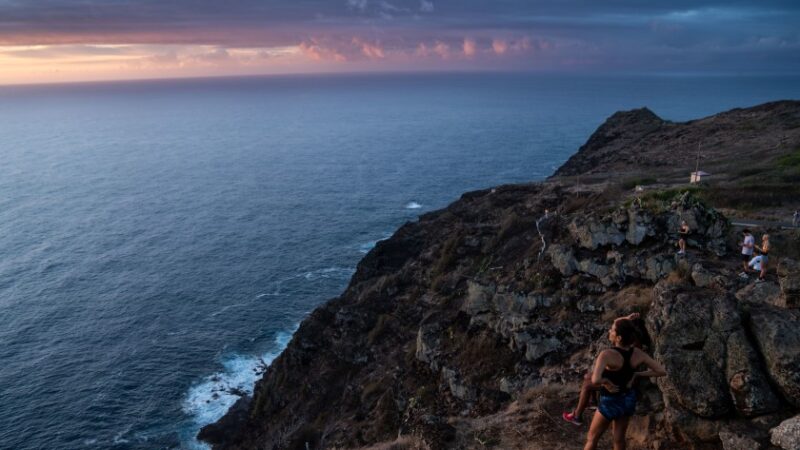
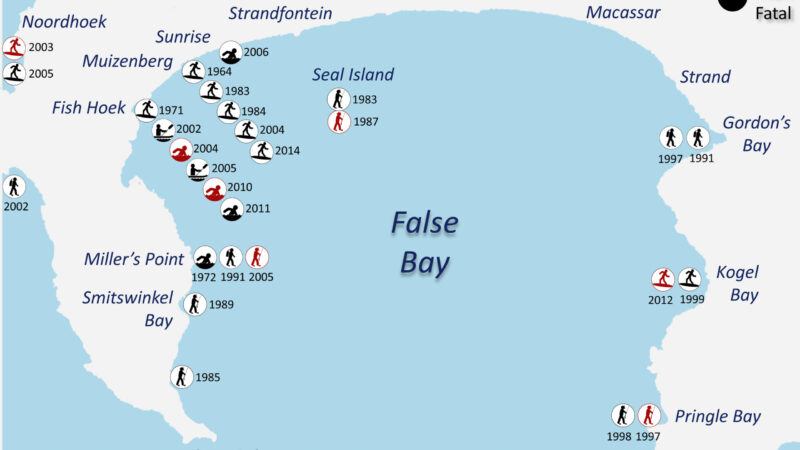
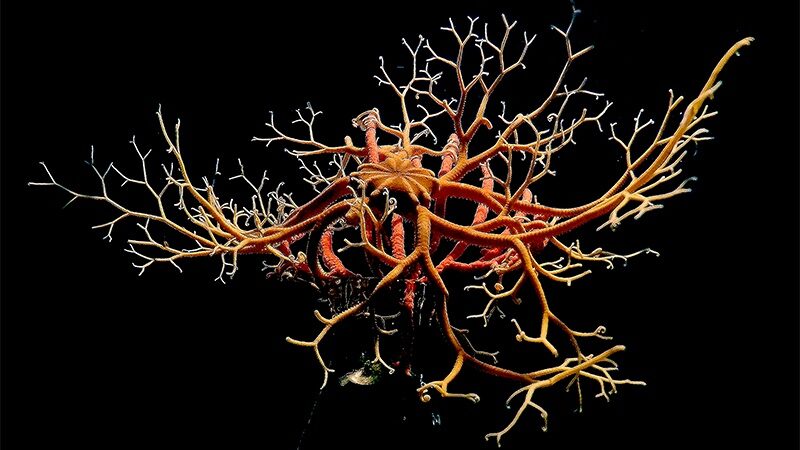
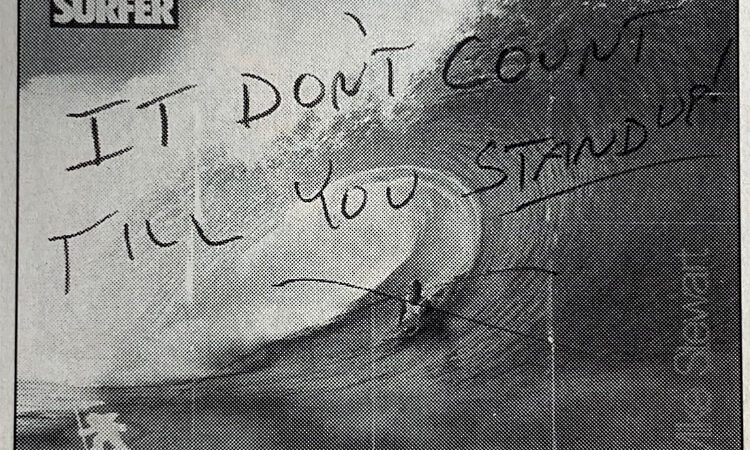
Recent Comments